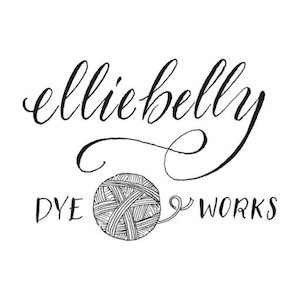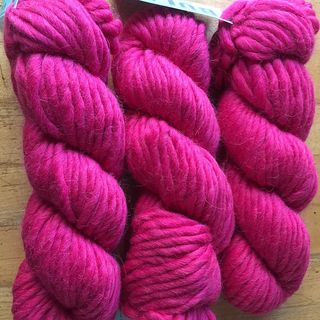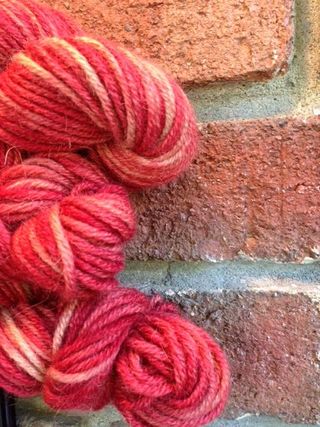Before I start this post, I need to say: I have too many works in progress (WIPs). I know this. But it doesn't change my desire, at a certain point every summer, to start casting on new projects. I get one started and then suddenly, like June lightening, a new pattern calls me with an irresistable pull and I'm off again. Fortunately, I tend to have a fall spate of finishing up all those projects, but still, I view this riotous approach to knitting as something of a character flaw and envy those who are more restrained.
That said, I have fallen in love with Nangou.
Nangou is a simple garter stitch with simple eyelet lace patterning rows scarf that was written for a fingering weight silk-merino blend yarn, so think light and delicate but gently warm.
 This version, by German knitter Blauregan, is knit in the pattern yarn, with the clever twist of using an undyed skein for the lace eyelet rows. It's one of my favorites.
This version, by German knitter Blauregan, is knit in the pattern yarn, with the clever twist of using an undyed skein for the lace eyelet rows. It's one of my favorites.
 Lismete's gold on gold variation is really eye catching as well, and I like the looser gauge she used for her project.
Lismete's gold on gold variation is really eye catching as well, and I like the looser gauge she used for her project.
 And AniaBKnits' version in a rich purple with darker eyelets looks like something I could toss around my shoulders every day.
And AniaBKnits' version in a rich purple with darker eyelets looks like something I could toss around my shoulders every day.
Since I'm trying to knit from stash these days, I took a look on Ravelry, which let me know I had a number of possibilities already in my stash.
 My Tosh Dandelion has a lot in common, color-wise, with several of the projects I like and the addition of 10% linen to the merino woud give it a nice drape. Plus, I've been dying to find something to knit with this yarn.
My Tosh Dandelion has a lot in common, color-wise, with several of the projects I like and the addition of 10% linen to the merino woud give it a nice drape. Plus, I've been dying to find something to knit with this yarn.
 A lot of knitters have used Tosh Merino Light, and it just so happens that I've got three skeins of Spruce tucked away.
A lot of knitters have used Tosh Merino Light, and it just so happens that I've got three skeins of Spruce tucked away.
And then, I could always dye some yarn just for this project. I've been impressed with the BFL/Silk sock yarn I've been dyeing for the last month, so I may dye some in a brown-gray colorway just for Nangou.
Currently, Ravelry includes 333 projects and Nangou has a rating of 4.7 stars out of 5, so it looks like it has made a lot of knitters happy. I'm looking forward to joining them!


